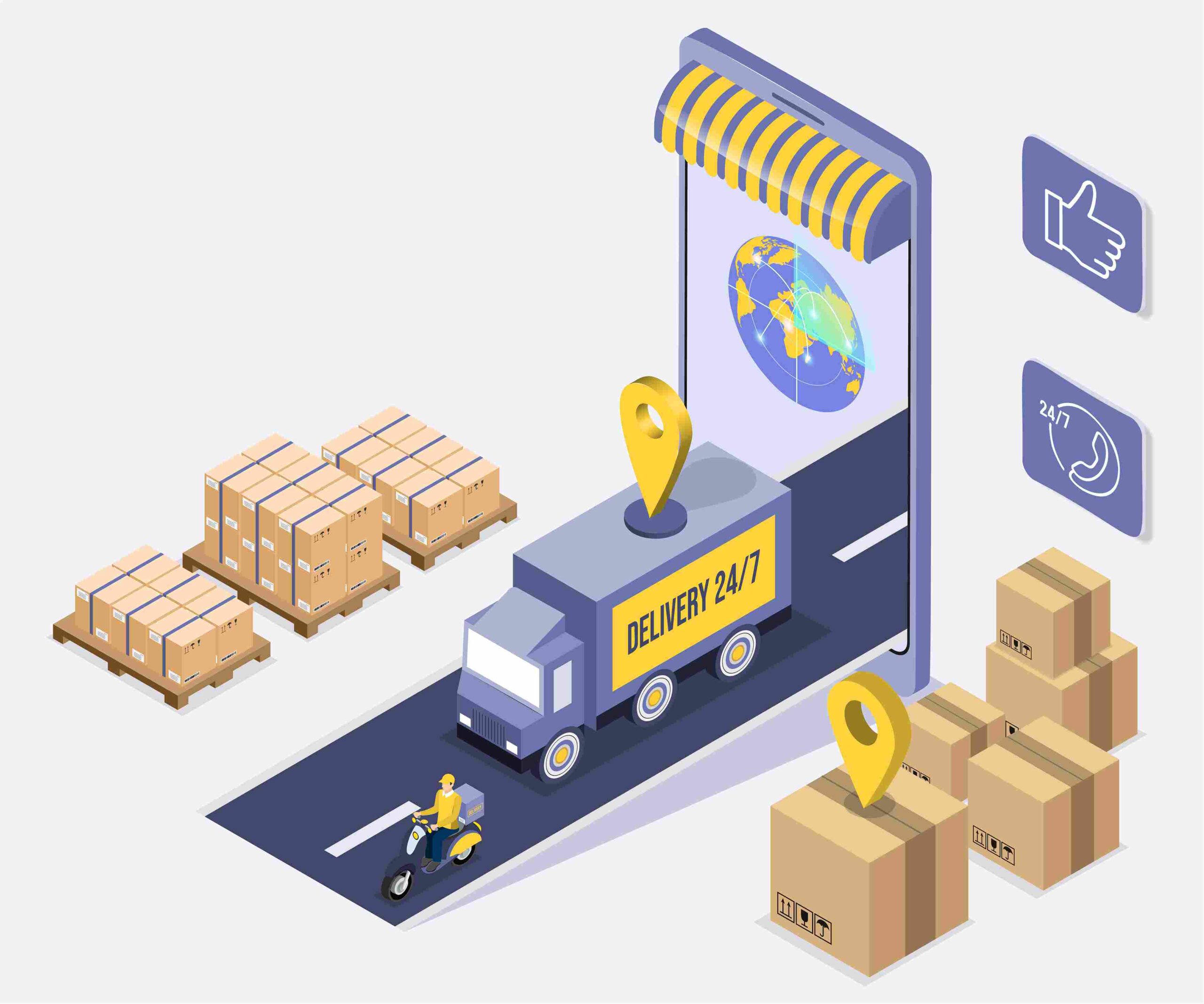Introduction
Definition of Delivery Management Systems
A Delivery Management System (DMS) is a comprehensive software solution designed to streamline and optimize the delivery process from order placement to final delivery. It integrates various functionalities such as route planning, real-time tracking, automated dispatch, and customer notifications, ensuring a smooth and efficient delivery experience. For small businesses, implementing a DMS can significantly enhance operational efficiency and customer satisfaction, leading to growth and competitiveness in the market.
Importance for Small Businesses
In today’s highly competitive business environment, small businesses face the challenge of meeting high customer expectations while managing operational costs effectively. Efficient delivery management is crucial, as it directly impacts customer satisfaction and retention. A well-implemented DMS can help small businesses achieve significant improvements in efficiency, cost savings, and scalability, enabling them to compete with larger enterprises and expand their market reach.
Overview of Article Structure
This article explores the various aspects of best delivery management systems, including their benefits, types, key features, and implementation steps. We will also discuss their applications in different industries, the challenges and solutions associated with their implementation, and the latest innovations and prospects. Additionally, we will provide expert insights, user guides, and a comparative analysis to offer a comprehensive understanding of how small businesses can leverage DMS for growth.
Understanding Delivery Management Systems
What is a Delivery Management System?
A Delivery Management System is a software platform designed to facilitate the planning, execution, and monitoring of delivery operations. It integrates various processes involved in delivering goods or services, from order intake to dispatch, tracking, and delivery confirmation. By providing real-time visibility and control over the delivery process, a DMS enhances operational efficiency, reduces costs, and improves customer satisfaction.
Key Features and Components
- Order Management: Centralizes all incoming orders, providing a single interface for tracking and managing them.
- Route Optimization: Uses sophisticated algorithms to determine the most efficient routes for deliveries, minimizing travel time and fuel consumption.
- Real-time Tracking: Allows businesses and customers to track deliveries in real-time, providing visibility and transparency throughout the delivery process.
- Automated Dispatch: Automates the assignment of delivery tasks to drivers, ensuring optimal use of resources and minimizing delays.
- Proof of Delivery: Captures digital signatures, photos, and other forms of delivery confirmation to ensure accountability and reduce disputes.
- Customer Notifications: Sends automated updates to customers regarding the status of their deliveries, enhancing communication and satisfaction.
Benefits for Small Businesses
Improved Efficiency
A DMS streamlines delivery operations by automating routine tasks and optimizing routes. This leads to faster deliveries, reduced idle time, and better use of resources, ultimately boosting overall efficiency. By centralizing order management and automating dispatch processes, small businesses can reduce manual errors and ensure timely deliveries.
Cost Savings
By optimizing routes and automating processes, a DMS helps small businesses cut down on fuel costs, labor expenses, and administrative overheads. The reduction in manual errors and delays further contributes to cost savings. Additionally, the ability to track deliveries in real time allows businesses to identify and address inefficiencies promptly, leading to further cost reductions.
Enhanced Customer Satisfaction
Timely and accurate deliveries are crucial for customer satisfaction. A DMS ensures that customers receive real-time updates on their deliveries, improving transparency and trust. The ability to provide reliable and prompt service enhances customer loyalty and retention. Moreover, features like proof of delivery and customer notifications ensure that customers are always informed and satisfied with the service.
Scalability
As small businesses grow, managing an increasing number of deliveries can become challenging. A DMS is scalable and can handle growing delivery volumes without compromising on efficiency. This scalability ensures that businesses can expand their operations smoothly, adapting to changing market demands and customer expectations without significant disruptions.
Types of Delivery Management Systems
On-premises vs. Cloud-based
- On-premises Systems: Installed and run on local servers within the business premises. They offer greater control and customization but require significant upfront investment and ongoing maintenance. These systems are ideal for businesses that require tailored solutions and have the necessary IT infrastructure to support them.
- Cloud-based Systems: Hosted on remote servers and accessed via the internet. They are cost-effective, scalable, and offer regular updates without the need for in-house IT support. Cloud-based systems are particularly beneficial for small businesses due to their lower initial costs and flexibility in scaling as the business grows.
Integrated vs. Standalone Systems
- Integrated Systems: Seamlessly integrate with other business systems like inventory management, CRM, and accounting software. They provide a unified platform for managing all aspects of the business, ensuring data consistency and reducing manual data entry. Integrated systems are ideal for businesses looking to streamline their entire operation and enhance interdepartmental collaboration.
- Standalone Systems: Focus solely on delivery management and do not integrate with other systems. They are simpler and often easier to implement but may require manual data transfer between systems. Standalone systems are suitable for businesses that primarily need to improve their delivery operations without overhauling their existing infrastructure.
Key Features of Delivery Management Systems
Real-time Tracking
Real-time tracking allows businesses to monitor the exact location of their deliveries. This feature provides visibility into the delivery process, enabling proactive management and timely interventions if necessary. Real-time tracking also enhances customer satisfaction by providing accurate delivery estimates and updates.
Route Optimization
Route optimization algorithms calculate the most efficient routes for deliveries, considering factors like traffic, distance, and delivery windows. This reduces travel time and fuel consumption, leading to cost savings and faster deliveries. By ensuring that deliveries are made on time and efficiently, route optimization contributes to overall customer satisfaction.
Automated Dispatch
Automated dispatch assigns delivery tasks to drivers based on predefined criteria such as location, availability, and capacity. This ensures that deliveries are assigned efficiently, minimizing delays and maximizing resource utilization. Automated dispatch also reduces the administrative burden on staff, allowing them to focus on other critical tasks.
Proof of Delivery
Proof of delivery features capture digital signatures, photos, and other forms of delivery confirmation. This enhances accountability and reduces disputes by providing verifiable evidence of successful deliveries. Proof of delivery is particularly important for businesses dealing with high-value or sensitive goods, ensuring that all deliveries are properly documented and verified.
Customer Notifications
Automated customer notifications keep customers informed about the status of their deliveries through SMS, email, or app notifications. This improves communication and customer satisfaction by providing timely updates. Keeping customers informed throughout the delivery process reduces uncertainty and enhances their overall experience with the business.
Implementation Steps
Assessing Business Needs
Before implementing a DMS, it’s essential to assess the specific needs and challenges of your business. Consider factors like delivery volume, geographical coverage, and integration requirements to choose a system that aligns with your goals. Conduct a thorough analysis of your current delivery operations to identify areas for improvement and prioritize your needs.
Choosing the Right System
Evaluate different DMS options based on features, scalability, ease of use, and cost. It’s crucial to select a system that meets your current needs and can grow with your business. Consider seeking recommendations from industry peers, reading reviews, and conducting trials to make an informed decision.
Integration with Existing Systems
For seamless operations, the chosen DMS should integrate with your existing systems such as inventory management, CRM, and accounting software. This integration ensures data consistency and reduces manual data entry. Work closely with your IT team or software provider to ensure smooth integration and minimize disruptions during the transition.
Training Staff
Proper training is vital to ensure that your team can effectively use the new system. Conduct comprehensive training sessions for all relevant staff members, focusing on key features and functionalities. Provide ongoing support and resources to help employees adapt to the new system and address any challenges they may encounter.
Monitoring and Evaluation
After implementation, continuously monitor the system’s performance and gather feedback from users. Evaluate the system’s impact on efficiency, cost savings, and customer satisfaction to identify areas for improvement and ensure it meets your business objectives. Regularly review and update the system to keep up with evolving business needs and technological advancements.
Applications in Different Industries
Retail
In the retail sector, a DMS can enhance the efficiency of home deliveries, ensuring that customers receive their orders promptly and accurately. It also supports inventory management by providing real-time updates on stock levels and delivery statuses. Retail businesses can use a DMS to manage both online and in-store orders, offering a seamless shopping experience for customers.
Food and Beverage
For food and beverage businesses, timely delivery is crucial to maintaining product quality. A DMS ensures that deliveries are made within optimal timeframes, preserving the freshness and quality of the products. It also allows businesses to manage multiple delivery channels, such as home deliveries, catering services, and supplier deliveries, from a single platform.
Healthcare
In the healthcare industry, a DMS can manage the delivery of medical supplies, pharmaceuticals, and lab samples. It ensures timely and accurate deliveries, which are critical for patient care and treatment. Real-time tracking and proof of delivery features enhance the reliability and accountability of deliveries, ensuring that critical medical items reach their destinations safely and on time.
Logistics
Logistics companies can use a DMS to optimize their delivery networks, reduce operational costs, and improve service levels. Real-time tracking and route optimization are particularly beneficial for managing large fleets and complex delivery schedules. By streamlining operations and enhancing visibility, a DMS enables logistics companies to provide reliable and efficient delivery services to their clients.
Challenges and Solutions
Technical Difficulties
Implementing a DMS can come with technical challenges such as system compatibility and integration issues. To address these, work with a reputable provider that offers robust technical support and ensures seamless integration with your existing systems. Conduct thorough testing before full implementation to identify and resolve potential issues.
Cost Concerns
The initial cost of implementing a DMS can be a concern for small businesses. However, the long-term benefits such as cost savings and efficiency gains often outweigh the upfront investment. Consider starting with a basic system and upgrading as your business grows. Look for scalable solutions that allow you to add features and functionalities as needed.
Employee Resistance
Employees may resist changes to their established workflows. To overcome this, involve them in the decision-making process, provide adequate training, and highlight the benefits of the new system to gain their buy-in. Foster a positive attitude towards change by addressing concerns and providing ongoing support to help employees adapt to the new system.
Customer Adaptation
Customers may initially be unfamiliar with the new delivery processes. Communicate the changes clearly and provide support to help them adapt. Offering real-time tracking and updates can enhance their experience and build trust. Ensure that customer service teams are well-equipped to handle inquiries and provide assistance during the transition.
Latest Innovations
AI and Machine Learning in Delivery Management
Artificial intelligence and machine learning are transforming delivery management by enabling predictive analytics, demand forecasting, and dynamic route optimization. These technologies enhance decision-making and improve operational efficiency. AI can analyze historical data to predict delivery times and optimize routes based on real-time conditions, while machine learning algorithms continuously improve the system’s performance over time.
Blockchain Technology
Blockchain technology offers secure and transparent tracking of deliveries, ensuring data integrity and reducing fraud. It can enhance supply chain transparency and provide verifiable proof of delivery. By creating an immutable record of each transaction, blockchain technology ensures that all parties involved in the delivery process can trust the data and verify the authenticity of deliveries.
Drones and Autonomous Vehicles
Drones and autonomous vehicles are emerging as innovative solutions for last-mile delivery. They can reduce delivery times and costs, particularly in urban areas, and offer new possibilities for contactless delivery. These technologies are still in the early stages of adoption but hold great potential for transforming the delivery landscape. Drones can quickly navigate congested areas and deliver small packages, while autonomous vehicles can handle larger deliveries over longer distances.
Future Prospects
Emerging Trends
The future of delivery management is shaped by trends such as increased automation, the use of big data analytics, and the adoption of green logistics practices. These trends are driving innovations that enhance efficiency and sustainability. Businesses are increasingly leveraging data to optimize delivery operations, reduce environmental impact, and meet growing consumer demands for faster and more reliable deliveries.
Predictions for the Future
Experts predict that delivery management systems will become more integrated, leveraging advanced technologies like AI, IoT, and blockchain. These systems will offer greater customization, real-time analytics, and enhanced customer experiences, revolutionizing the way deliveries are managed. The integration of IoT devices will provide real-time data on vehicle performance and environmental conditions, further improving delivery efficiency and reliability.
Comparative Analysis
Comparison with Traditional Delivery Methods
Traditional delivery methods often involve manual processes and limited visibility, leading to inefficiencies and higher costs. In contrast, a DMS automates and optimizes the delivery process, providing real-time tracking and data-driven insights. By reducing manual intervention and leveraging technology, DMS ensures faster, more accurate, and cost-effective deliveries.
Comparison with Other Technologies
Compared to other logistics technologies such as warehouse management systems (WMS) and transportation management systems (TMS), a DMS focuses specifically on last-mile delivery. It complements these systems by ensuring efficient and accurate delivery to the end customer. While WMS and TMS manage the broader aspects of inventory and transportation, DMS ensures that the final leg of the delivery process is handled seamlessly and efficiently.
Case Studies
Success Stories of Small Businesses
Several small businesses have successfully implemented delivery management systems to streamline their operations and achieve growth. For example, a local bakery improved its delivery efficiency by 40% and reduced delivery costs by 25% after adopting a DMS. By optimizing routes and automating dispatch, the bakery was able to handle more orders and deliver them faster, resulting in increased customer satisfaction and repeat business.
Lessons Learned
Case studies highlight the importance of choosing the right system, investing in staff training, and continuously monitoring performance. These lessons can guide other small businesses in successfully leveraging DMS for growth. Businesses should focus on selecting a scalable system that meets their specific needs, provide comprehensive training to employees, and regularly evaluate the system’s performance to identify areas for improvement.
Expert Insights
Interviews with Industry Experts
Industry experts emphasize the transformative potential of delivery management systems for small businesses. They highlight the importance of integrating these systems with other business processes and staying updated with the latest technological advancements. Experts recommend adopting a holistic approach to delivery management, considering not only the technology but also the people and processes involved.
Expert Tips and Advice
Experts recommend starting with a clear assessment of business needs, choosing a scalable system, and focusing on customer experience. Regularly reviewing and optimizing the system is crucial for maximizing its benefits. Additionally, businesses should stay informed about emerging trends and innovations in delivery management to ensure they are leveraging the latest technologies and best practices.
User Guides or Tutorials
Step-by-Step Guide to Implementing a Delivery Management System
- Identify Business Needs: Assess your delivery volume, geographical coverage, and integration requirements.
- Research Systems: Compare different DMS options based on features, scalability, and cost.
- Choose a System: Select a DMS that aligns with your business goals and budget.
- Plan Implementation: Create a detailed implementation plan, including timelines and resource allocation.
- Integrate Systems: Ensure seamless integration with your existing business systems.
- Train Staff: Conduct comprehensive training sessions for all relevant staff members.
- Monitor Performance: Continuously monitor the system’s performance and gather feedback.
Best Practices for Maximizing Efficiency
- Use Real-time Data: Leverage real-time tracking and analytics to make informed decisions.
- Optimize Routes: Regularly review and update delivery routes to ensure efficiency.
- Automate Processes: Automate routine tasks like dispatch and customer notifications to save time and reduce errors.
- Engage Customers: Keep customers informed with real-time updates and proactive communication.
Conclusion
Summary of Key Points
Leveraging delivery management systems can significantly benefit small businesses by improving efficiency, reducing costs, and enhancing customer satisfaction. By understanding the different types of systems, key features, and implementation steps, businesses can choose the right DMS to meet their needs. Emerging trends and innovations promise to further revolutionize delivery management, offering new growth opportunities.
Final Thoughts
In a competitive market, efficient delivery management is crucial for small businesses to thrive. By adopting a robust delivery management system, businesses can streamline their operations, meet customer expectations, and achieve sustainable growth. Staying informed about the latest trends and continuously optimizing the system will ensure long-term success in the dynamic landscape of delivery management.
FAQs
- What is a Delivery Management System?
A delivery management system is a software solution that manages and optimizes the delivery process from order placement to final delivery.
- How can a DMS benefit small businesses?
A DMS can improve efficiency, reduce costs, enhance customer satisfaction, and scale with business growth.
- What are the key features of a DMS?
Key features include real-time tracking, route optimization, automated dispatch, proof of delivery, and customer notifications.
- How do I choose the right DMS for my business?
Assess your business needs, compare different systems, and choose one that aligns with your goals and budget.
- What are the challenges of implementing a DMS?
Common challenges include technical difficulties, cost concerns, employee resistance, and customer adaptation.
- What are the latest innovations in DMS?
Innovations include AI and machine learning, blockchain technology, and drones for last-mile delivery.




